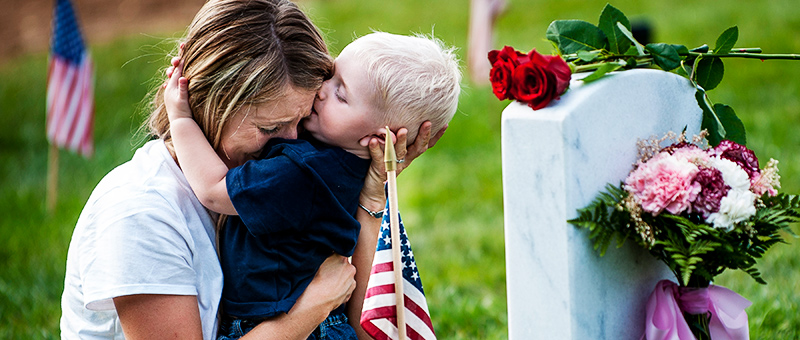
Memorial Day is far more than just a vacation holiday or a time to have a barbecue. It is the day Americans commemorate those who gave their lives while serving in our nation’s armed forces.
The tribute dates to May 5, 1862 when Union General John A. Logan called for a nationwide day of remembrance for the nation's fallen soldiers. On May 30, 1868 the first "Decoration Day" took place. Future President General James Garfield made a speech at Arlington National Cemetery, and 5,000 participants decorated the graves of the 20,000 Union and Confederate soldiers buried there.
For decades, Memorial Day continued to be observed on May 30, the date Logan had selected for the first Decoration Day. But in 1968 Congress passed the Uniform Monday Holiday Act, which established Memorial Day as the last Monday in May.
Here are some quick facts about Memorial Day:
- Each year on Memorial Day a national moment of remembrance takes place at 3:00 p.m. local time.
- The first Decoration Day took place about one month after the end of the Civil War in 1865. In several states, the practice of placing flowers on the graves began in 1866. Although several towns lay claim to the holiday, in 1966, Waterloo, NY was designated the official birthplace of the holiday.
- Although there are many different customs and traditions associated with the holiday, there are two common traditions observed everywhere. The first is lowering the flag to half staff until noon and raising it to full staff until sundown. The other tradition is playing Taps at military funerals.
- The first large federal observance occurred at Arlington National Cemetery, the former home of Confederate General Robert E. Lee. After the war, it became a cemetery to bury the nation’s dead. During a ceremony where speeches were given, children of the Soldier’s and Sailors’ Home and members of the Grand Army of the Republic walked through the cemetery singing hymn and reciting poetry while strewing flowers on the graves, reports Veterans Affairs.
- Millions of people will travel over 50 miles to commemorate the holiday. Last year over 36 million people traveled during the Memorial Day weekend.
U.S. War Casualties:
Revolutionary War - Approximately 25,000 Americans died.
War of 1812 - Approximately 15,000 Americans died.
Mexican-American War - Approximately 13,283 Americans died.
Spanish–American War - Approximately 4,196 Americans died.
Civil War - Approximately 620,000 Americans died. The Union lost almost 365,000 troops and the Confederacy about 260,000. More than half of these deaths were caused by disease.
World War I - 116,516 Americans died, more than half from disease.
World War II - 405,399 Americans died.
Korean War - 36,574 Americans died.
Vietnam Conflict - 58,220 Americans died. More than 47,000 Americans were killed in action and nearly 11,000 died of other causes.
Operation Desert Shield/Desert Storm - 148 U.S. battle deaths and 235 non-battle deaths.
Operation Iraqi Freedom - 4,424 U.S. service members died.
Operation New Dawn - 66 U.S. service members died.
Operation Enduring Freedom - 2,355 U.S. service members have died as of December 31, 2014.
Total of Major American Wars - 1,301,181 Americans died.




